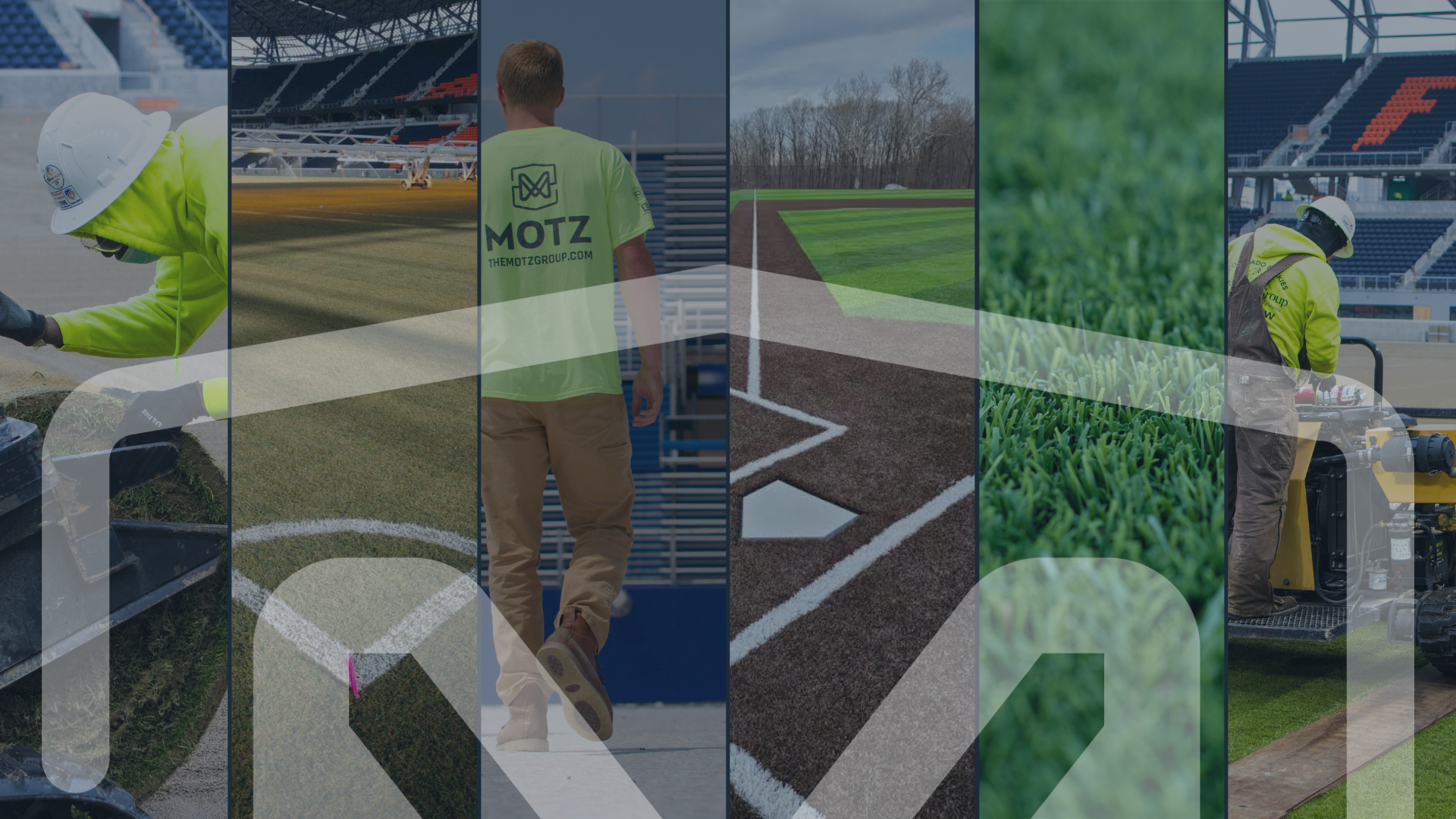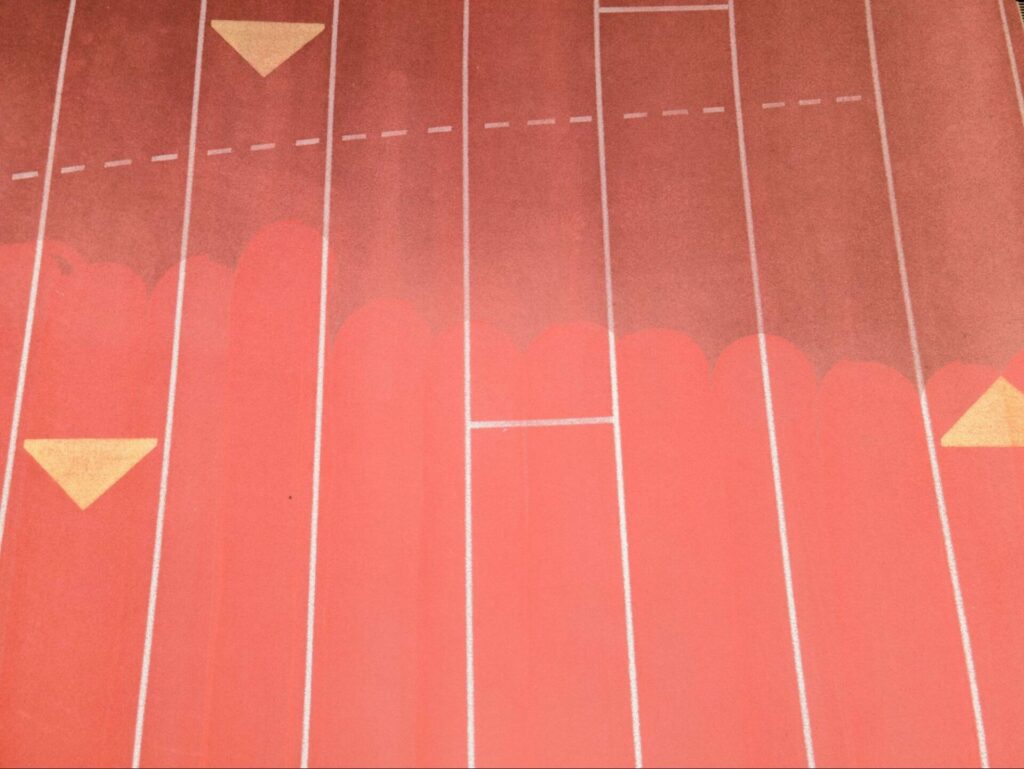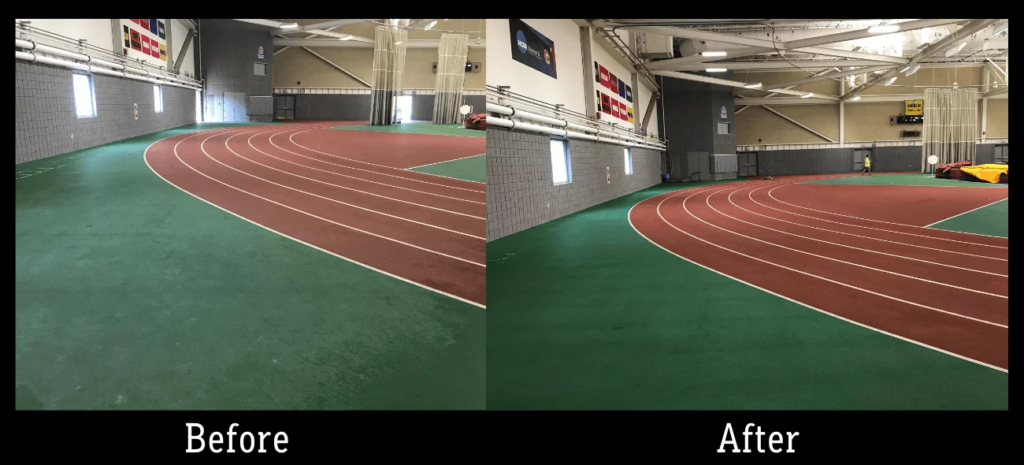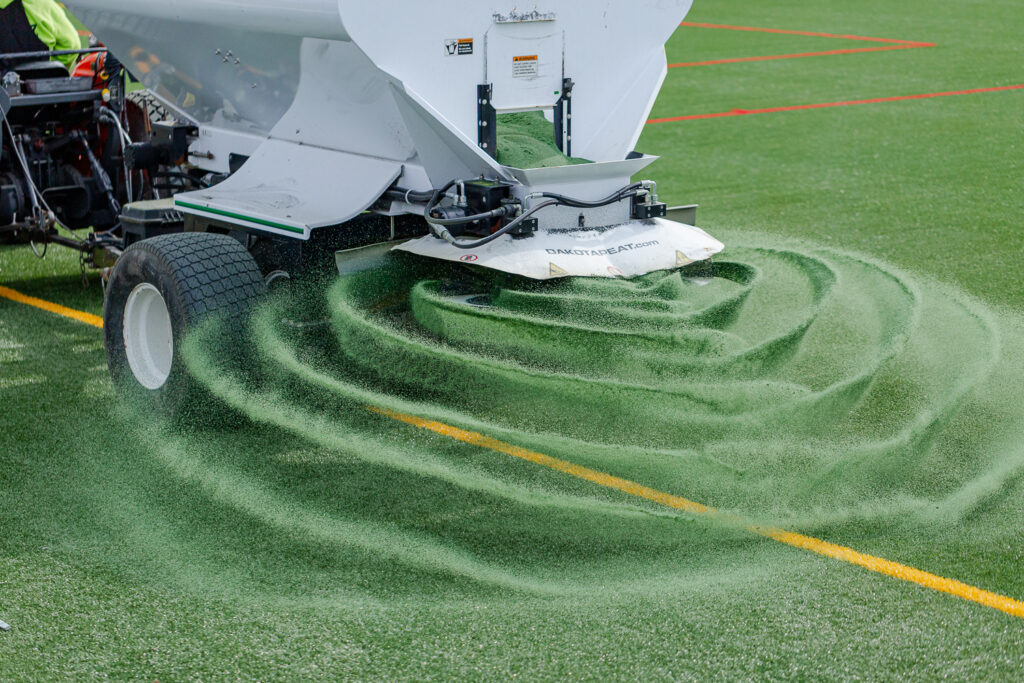
Sports Field Blog
Subscribe To Email Updates
Subscribe to our weekly newsletter and we’ll send updates straight to your inbox
When is it Time to Bring in a Professional Team for Running Track Cleaning?

The track. A point of pride where future goals are set and records are achieved. Practice after practice, race after race, your athletes push themselves to go beyond their boundaries, and the track beneath their feet supports them.
Your track needs tender loving care and attention. As many good seasons of games come and go, the track endures – and it begins to show. The color can begin to fade, debris can begin to gather, and water, dirt, and grime can begin to accumulate. By this time, cleaning is long overdue.
What do you do next? In this blog, we’ll cover:
Track Maintenance: How to Spot Signs of Wear and Tear or Damage
If your track is heavily-used, it’s susceptible to environmental conditions and misguided maintenance practices. If you have an outdoor track, it can easily fall prey to UV exposure, moisture, and temperature fluctuations over time. Sometimes, the wrong footwear, mowing, snow clearance, or the accidental dragging of objects, can accelerate the wear.
These causes often show up on the track in the following ways:
- Cracks and tripping hazards: Weather conditions and the natural aging process can lead to the formation of cracks. These cracks, if left unattended, can widen and deepen, posing serious tripping hazards to athletes. If not addressed immediately, the damage can spread.
- Surface damage: Incidental gouges can occur from the misuse of equipment, such as the blades of mowers clipping the edge of the track or the dragging of heavy objects across its surface. Additionally, areas subjected to intense use, including starting block zones and high-traffic lanes, tend to wear down quickly, compromising the integrity of the surface.
- Material deterioration: Over time, the materials that compose the running track, such as rubber and latex or polyurethane, may begin to deteriorate. This degradation manifests as hardening, thinning, peeling and/or flaking of the surface layer; the appearance of cracks and bubbles, and an overall unevenness. Such deterioration isn’t just unaesthetic – it poses severe risks of injuries as its shock-absorbing capabilities are compromised.
- Drainage issues: When water pools on the surface following rainfall, it can indicate underlying issues such as depressions in the underlying asphalt or a compromised drainage system. Standing water not only poses slip hazards but can also lead to water damage, affecting the track’s entire structure and surface material.
- Mold and algae growth: In conditions of persistent moisture and limited sunlight, the track surface can become a breeding ground for mold and algae. This growth not only discolors and damages the track but also introduces a slip hazard, compromising the safety of its athletes.
- Seam separation: Tracks constructed from prefabricated rubber sheets are joined at the seams, which can begin to separate over time due to environmental factors or physical stress. These separations create gaps that can trip athletes, collect water, or further degrade under the elements.
Learn more: 6 tips to maintain your running track.
How Do You Clean A Running Track?
Along with routine inspections, cleaning is an uncompromising requirement for track care.

Cleaning a running track involves a combination of routine maintenance tasks (light cleans) and periodic rigorous cleaning efforts (deep cleans). In combination, they extend the life of your running track, improve the appearance, and performance.
Read: All you need to know about running track cleaning and maintenance
Self-Performed Track Cleaning
Self-performed running track cleaning usually doesn’t require professional assistance, but it needs to be performed regularly to keep it healthy and avoid building up expensive problems. It involves:
- Sweeping: Use soft-bristled brushes or brooms to sweep the track to remove materials that may cause athletes to slip, such as sand, mowed grass, or other debris.
- Rinsing: Rinse and light-clean your track (without soap) after large events where the track experiences a high amount of foot traffic. Hose down the track to push sand, grime, dirt, and other contaminants to the edge and off the track entirely.
- Debris removal: Use leaf blowers or similar non-contact tools to clear the track of leaves, twigs, and other objects. This approach avoids any direct interaction with the track surface that could lead to scratches or other damage.
- Weed control: Periodically remove weed growth from the perimeter of the track to prevent overgrowth and slipping hazards.
- Drainage inspection: Regularly check and clear track drainage systems to ensure they are free from blockages. Proper drainage is essential to prevent water accumulation that can lead to surface damage or create slip hazards.
Professional Track Cleaning
Major cleaning should be done regularly, and always by track field professionals. A good cadence includes preventive light cleaning, every 1-2 years, and deep cleaning every three years.
The rigor and meticulousness of the process ensure a thorough track cleaning that eliminates compacted dirt, grime, and embedded particles that regular maintenance work cannot reach. It is key to preventing long-term material degradation, restoring the track’s qualities and safety.
A cleaning can be scheduled throughout the year, provided the weather is above 45-50℉. Additional time may be needed for restriping or repairs. Motz’s Track Aide offers two cleaning options: light track cleaning and deep track cleaning.
The term “light clean” is deceptive. It’s an intensive two-day-long process to be performed yearly, recommended as preventative maintenance. Our team will conduct a thorough evaluation of your track’s health, use specialized equipment to water broom debris off the track surface, and clean using pressurized tap water and a powered brush.
A deep track cleaning is a five-day-long process involving debris removal, pre-soaking the track, and finally, using specialized equipment to clean the track using pressurized heated water with a high capacity vacuum system to extract the dirty water. This step removes layers of built-up algae, dirt, and bacteria without the need for chemicals.
The deep clean process is often considered more restorative, and we often recommend it if a track has not been professionally cleaned in three years or more.
Thinking of using our Track Aide service? Here’s what to expect.
How To Clean An Indoor Track

The indoor environment makes the indoor track a delicate space to clean. Ventilation, moisture control concerns, and the controlled internal environment demand specialized equipment and cleaning techniques. You should always hire a professional like Motz for regular deep cleaning. Apart from that, follow these general maintenance tips:
- Regularly vacuum the track surface before and after events, or at least once per week, to remove dust, dirt, and debris.
- Address spills, stains, or marks as soon as they occur using water only. Avoid harsh chemicals!
- Use a dry mop to collect finer particles and hair that the vacuum may not pick up.
Have questions about indoor track maintenance? Get in touch with the Motz365 Track Aide team – we’d be happy to help. (We’ll even come out to you for a maintenance training session!)
How to Know if it's Time for a Professional Track Cleaning
There are several situations where DIYing your track cleaning just won’t cut it. Here are certain scenarios where you’ll need professional intervention:
- Your track needs a deep cleaning. You should clean your track once every 3 years to ensure it remains in top condition. Hire Motz365’s Track Aide services for this.
- There is too much damage: When tracks show signs of significant wear, such as large cracks, peeling, or areas where the surface material has degraded, call a Motz professional to assess and perform the necessary repairs and cleaning to ensure the track’s longevity and safety.
- After severe weather events: Severe weather, including heavy rains, snowstorms, or hurricanes, can clog up the drainage and leave the track in need of extensive cleaning and restoration.
- There’s a major event coming up: Prior to hosting major athletic events, a professional cleaning can ensure that the track is in pristine condition, providing a safe and competitive environment for athletes. This can include deep cleaning, lane re-striping, and surface inspection.
- You don’t have the right equipment: If your facility lacks the necessary equipment for effective cleaning and maintenance, professionals can fill this gap with advanced tools and technologies, ensuring a thorough cleaning that might not be achievable with basic tools.
Premium Track Maintenance Services By Motz
Motz365 is an all-encompassing synthetic turf field and track maintenance package provided by Motz, tailored to assist owners of athletic facilities in preserving the excellence and durability of their synthetic turf fields and running tracks. This program goes beyond regular upkeep, embodying Motz’s dedication to delivering responsive solutions, expert services, and first-class support to guarantee that synthetic turf fields and tracks are kept in prime condition.
Intensive Track Cleaning with Track Aide

Motz offers top-of-the-line maintenance and cleaning solutions for track fields. We have a suite of specialized equipment at hand that’s designed for track cleaning. For example, our Flier Track Surface Cleaner™ does a thorough job of cleaning running tracks, both indoors and out, without damaging the surface or fading painted lines. The machine uses high-pressure, heated water to remove stains and debris from running tracks’ textured surfaces — no chemicals needed. Next, our vacuum system quickly and efficiently recovers up to 95% of the water used, running it through a filtering process.
Watch Track Aide In Action
Ready to improve your running track’s look, performance, and lifespan? Talk to one of our track cleaning experts today.
FAQ
- How often should a track be professionally cleaned?
We recommend cleaning your running track every three years, varying on how frequently your track is used and by how many people. - Can you pressure wash a track?
You shouldn’t. The force of the water could damage the surface. We recommend routine maintenance practices such as sweeping, using soft-bristled tools, and regular light rinsing to remove materials that may cause athletes to slip or contribute to the buildup of sand, grime, and dirt. The best thing is, of course, to hire a professional. Talk to one of our track cleaning experts today.
Similar Blogs



